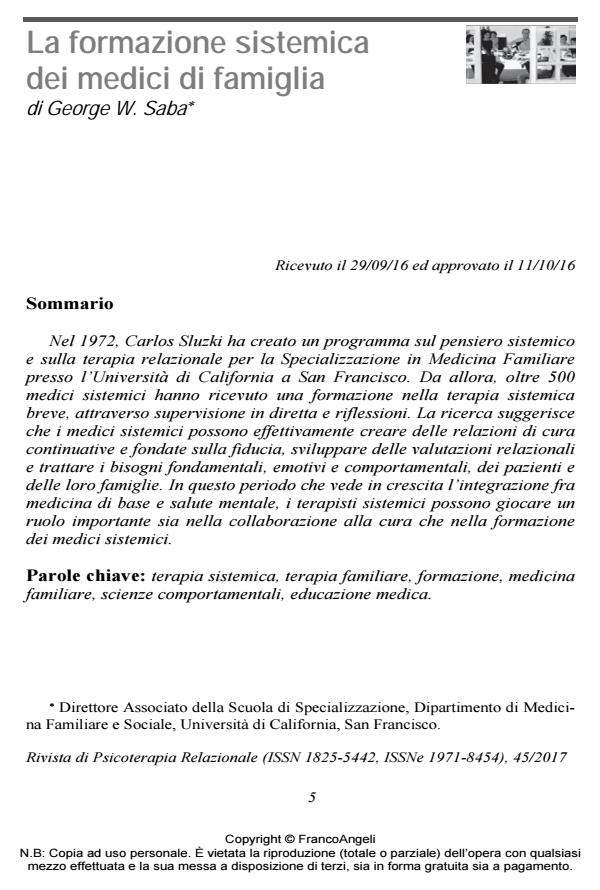On Training Systemic Family Physicians
Journal title RIVISTA DI PSICOTERAPIA RELAZIONALE
Author/s George W. Saba
Publishing Year 2017 Issue 2017/45
Language Italian Pages 24 P. 5-28 File size 226 KB
DOI 10.3280/PR2017-045001
DOI is like a bar code for intellectual property: to have more infomation
click here
Below, you can see the article first page
If you want to buy this article in PDF format, you can do it, following the instructions to buy download credits

FrancoAngeli is member of Publishers International Linking Association, Inc (PILA), a not-for-profit association which run the CrossRef service enabling links to and from online scholarly content.
In 1972, Carlos Sluzki created a curriculum in systems thinking and relational therapy for the Family Medicine Residency at the University of California San Francisco. Since then, over 500 systemic physicians have received training in brief systemic therapy through live supervision and reflection. Research suggests that systemic physicians can effectively create trusting caring continuity relationships, develop relational assessments and treat basic emotional and behavioral needs of patients and families. In this growing era of the integration of primary care medicine and behavioral health, systemic therapists can play an important role in both providing collaborative clinical care and training systemic physicians.
Keywords: Systemic therapy, family therapy, training, family medicine, behavioral science, medical education.
- Handbook of Systemic Approaches to Psychotherapy Manuals George Saba, pp.507 (ISBN:978-3-030-73639-2)
George W. Saba, La formazione sistemica dei medici di famiglia in "RIVISTA DI PSICOTERAPIA RELAZIONALE " 45/2017, pp 5-28, DOI: 10.3280/PR2017-045001